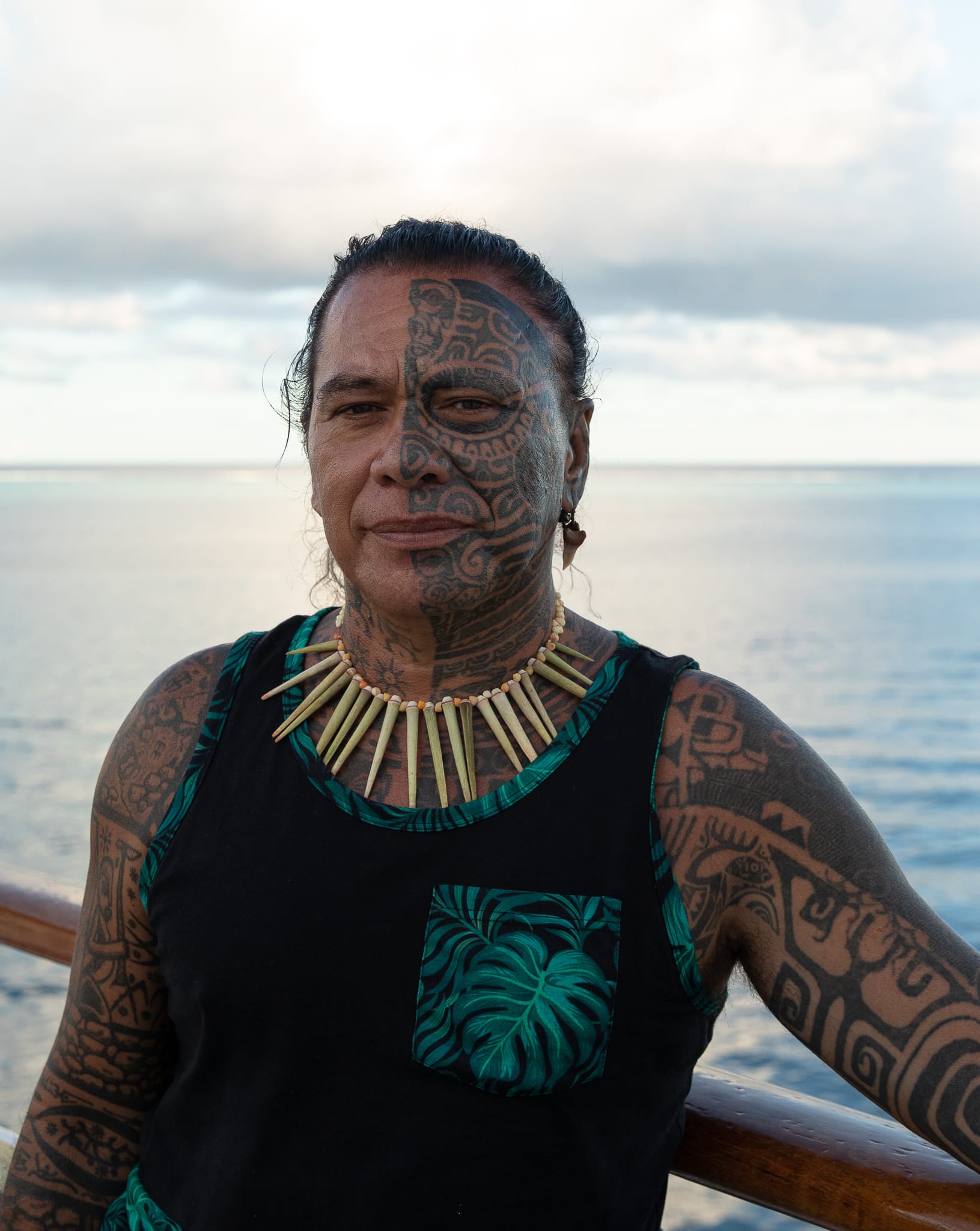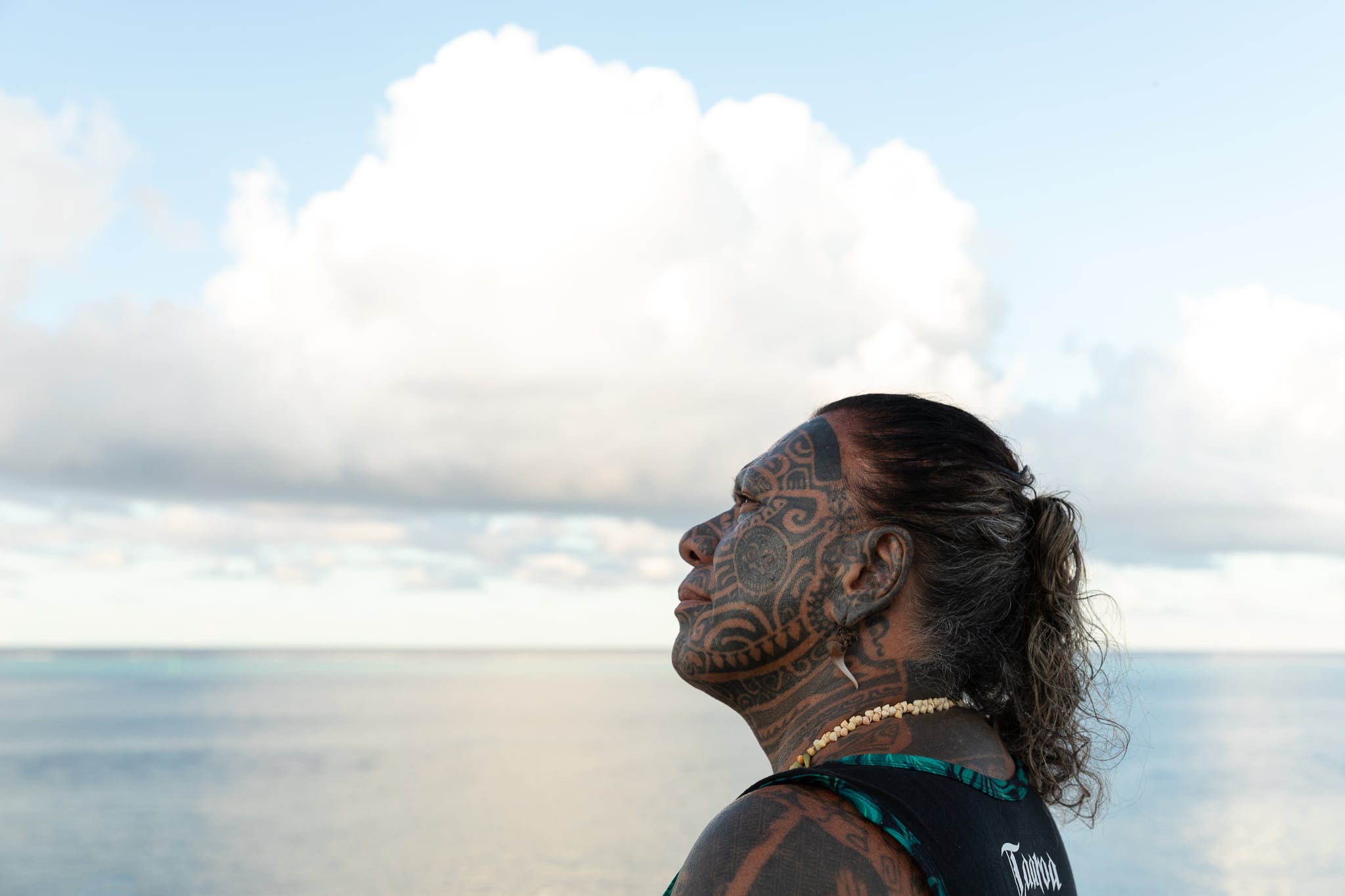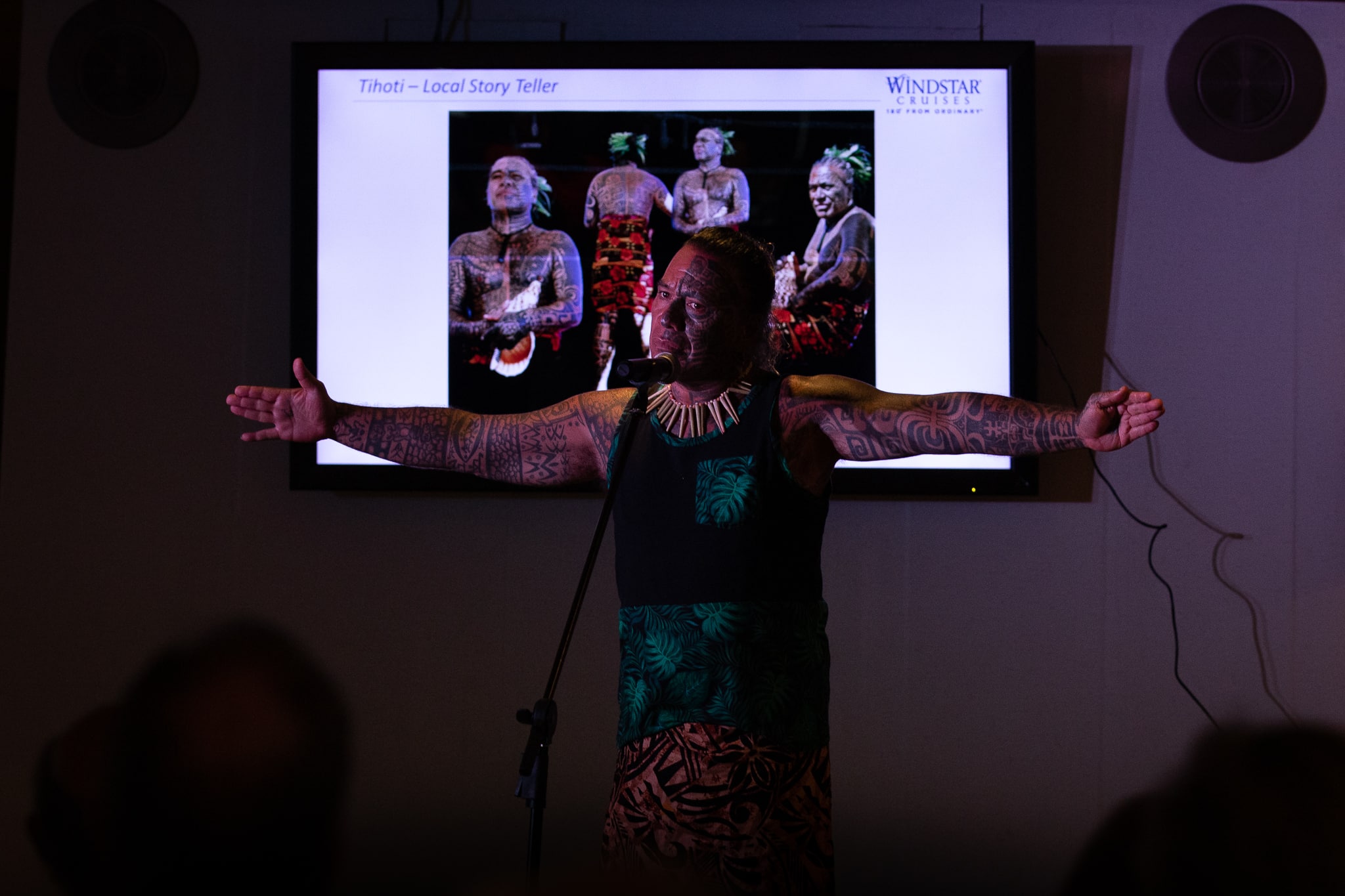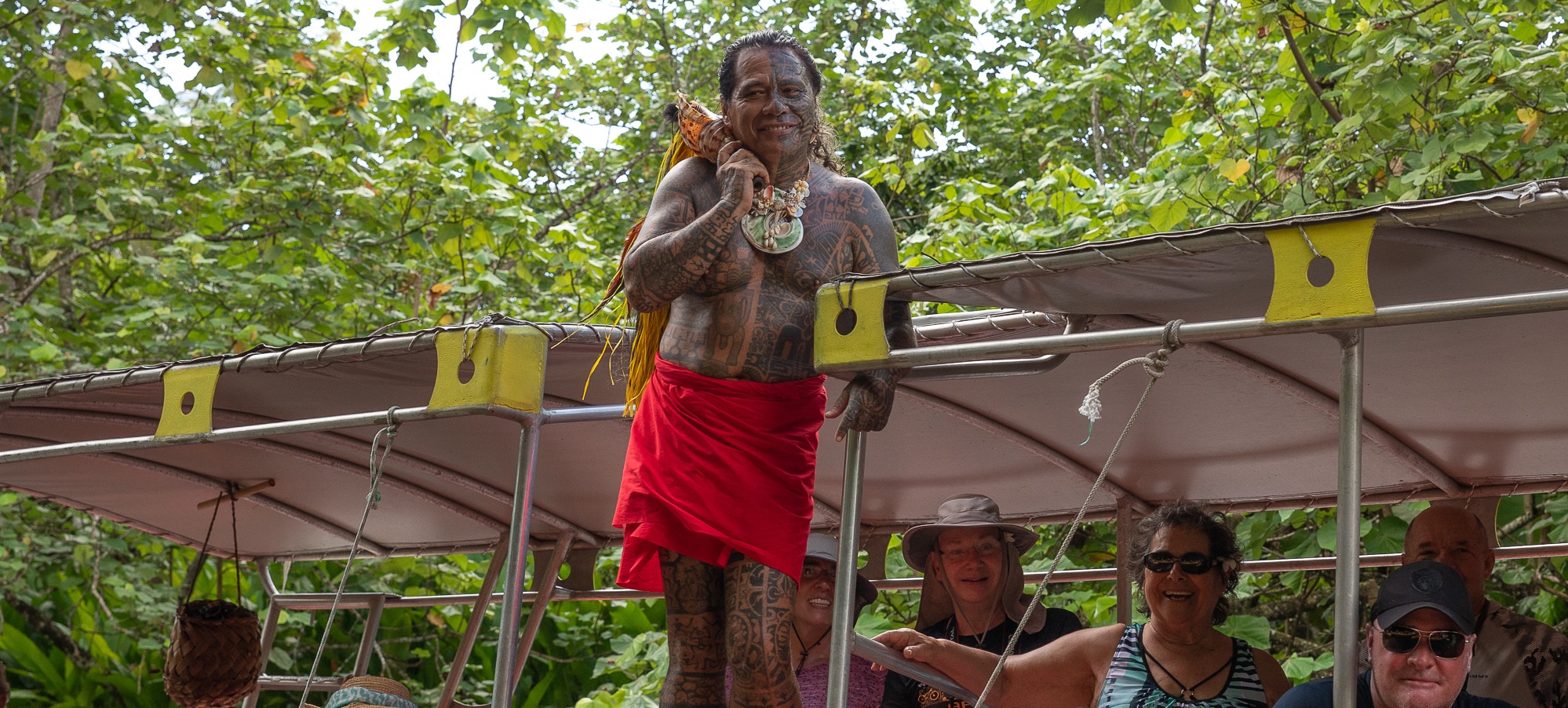Windstar has been sailing to the Tahitian Islands for over 35 years, and during that time we have established a wide network of local guides, artists and experts. From tours to presentations, learning about the culture and history of French Polynesia, and engaging with local communities is a key part of the guest experience. Tihoti is just one of our incredible guides and educators, and he recently sat down with Windstar to talk about everything from his tattoos to keeping Tahitian culture alive in the digital age.
Meet Tihoti
 If you take a tour of the Faaroa River in Raiatea, you may be lucky enough to have Tihoti Faara Barff be your guide. Tihoti, who hails from the island of Tahaa, is also one of our regular onboard presenters, offering an hour-long lecture on Tahitian tattoos before dinner during our overnight in Raiatea. His numerous tattoos will certainly catch your eye, but it’s his passion for sharing his culture that will leave a lasting impression.
If you take a tour of the Faaroa River in Raiatea, you may be lucky enough to have Tihoti Faara Barff be your guide. Tihoti, who hails from the island of Tahaa, is also one of our regular onboard presenters, offering an hour-long lecture on Tahitian tattoos before dinner during our overnight in Raiatea. His numerous tattoos will certainly catch your eye, but it’s his passion for sharing his culture that will leave a lasting impression.
Tihoti’s keen interest in drawing led him to explore tattooing, and he gave himself his first tattoo at the age of 14. “At the time [1980], we didn’t have machines, so we did hand poke tattoos with sewing needles and ink,” he says. By age 22, half of his body was covered in tattoos, over the next fifteen years, he covered his entire body, including half of his face. “I wish I had more space,” he remarks with a smile. Tihoti has worked with just three tattoo artists over the decades, all of whom specialize in different styles. In addition to teaching these artists the hand poke method, Tihoti has also done a handful of his tattoos himself. “The tattoo on my right side is Tahitian, which is very rare,” he notes. On his left shoulder, a cluster of Marquesan tattoos display a decidedly more intricate aesthetic.
Tihoti added that having tattoos helps connect him to his ancestors, and his favorite piece is part of his arm sleeve, depicting a stone temple, or marae, which are spaces for worship and celebration for French Polynesians. Tihoti also has numerous scenes of nature inked on his body, including ocean waves, birds and trees. “It is not just a design,” he notes. “The meaning of the tattoo is about my connection to these symbols, and my connection to the forces of nature. You don’t just tattoo your skin; you tattoo your spirit.”
History of Tahitian Tattoos

Polynesian tattoo art is a tradition believed to be at least 2,000 years old, and the styles from each island vary greatly. Geometric patterns are perhaps the most recognizable, but pictographic art and motifs of nature are common as well. Tattoos are also an expression of identity, and historically, status. “When you are chief or king, you have a tattoo on your face,” Tihoti explains. “If you are a fisherman, your tattoos say that. And of course, the most important person at the time is the tattoo artist, because he is the one to tattoo everyone.”
The origins of Polynesian tattoos can be traced back to the Māori civilization, but after missionaries colonized the islands in the early 1800s, tattoos were banned. However, the 1980s marked the beginning of the Tahitian tattoo revival, with many French Polynesians, including Tihoti, reclaiming their cultural identity. Tavana Samone was the main figure behind the revival of Tahitian tattoos, and he left quite an impression on a then-teenage Tihoti. “He did some research in Hawaii, and then traveled to Samoa to learn more about traditional tattoos, and he was later tattooed by a Samoan artist in Hawaii,” Tihoti says. “Then when he arrived in Tahiti around 1982 and showed off his tattoos, many of the kids idolized him.”
Tahitian Tattoos Today

“Language is the soul of the people,” Tihoti replies, when asked how to keep Tahitian culture alive in modern days. “Speaking the language, having tattoos, ritual ceremonies — all of this helps us remember the ancestors. They’re not here anymore, but we are them today. And so we all want to recreate, because we have lost a significant part of our culture.” Tihoti also points out the importance of connecting to nature. “Ancestors reach out to say pray and give thanks, and they would turn to nature for this. They believe the sea is God. If we cut down a tree, they ask for permission from the tree, and all the land is considered sacred.”
As far as tattoos, Tihoti is delighted by the renewed interest, but also quick to point out the difference between getting a tattoo to connect with ancestors, versus tattoos simply for fashion. “The meaning today is centered more on art, beauty, and aesthetics. Mostly, when we ask young people the meaning of their tattoos, they proudly say, ‘I am Polynesian.’ That’s it. It’s beautiful, but it’s not necessarily the same as ancient times.” Despite machines replacing the traditional stick and poke method, and how easily anyone can get a tattoo these days, Tihoti notes that as long as there is a balance, technology is not necessarily a bad thing.
“All the tattoo shops today are all connected to Facebook and Instagram, but so are many of us. So we have to understand the role of technology,” Tihoti concludes. “When I started, there was no technology. So the meaning of tattoos today is not the same meaning we had when I started, and when I started, it wasn’t the same as it was a thousand years ago. This is the way this art is evolving, and my job is to keep that door open.”






